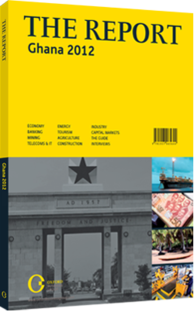CAL Bank: Banking
THE COMPANY: CAL Bank, formerly CAL Merchant Bank, was incorporated in March 1989 as a private limited liability company. CAL Bank started operations as a local merchant bank in 1990 with the aim of providing international-standard services.
CAL currently has three wholly owned subsidiaries: CAL Brokers, a securities broker and a licensed dealing member of the GSE; CAL Asset Management Company, a fund manager and investment advisor licensed by the Securities and Exchange Commission (SEC); and CAL Bank Nominees, which is a company that holds and administers assets as a custodian. The bank has a network of more than 48 ATMs and 18 branches, and is currently in the process of opening several branches in major cities and business districts located across Ghana.
In 2004 CAL acquired a universal banking licence and undertook a GHS5.4m ($3.2m) initial public offer that was 4.5 times oversubscribed. In 2009 it raised its stated capital to GHS25m ($14.8m) to satisfy the Bank of Ghana’s directive to increase stated capital to GHS25m ($13m) by December 2010, then to GHS60m ($35.6m) by December 2012.
In 2012 CAL successfully raised GHS75m ($44.5m) through a private placement to increase its stated capital to GHS100m ($59.3m) which was two times over-subscribed. The main investors in the issue were African Development Partners I, Proparco of France and the Social Security and National Insurance Trust (SSNIT) of Ghana.
CAL’s share price has recovered strongly from its slow performance in 2011. In December 2011, shares fell to an all-time low of GHS0.22 ($0.13). The stock, however, gained momentum in the second half of 2012 mainly due to a successful private placement. The bank has consistently paid dividends over the past five years, with an average payout ratio of 27%.
CAL is one of the few locally owned banks to have a stated capital of GHS100m ($59.3m). In terms of the bank’s performance, CAL continues to source its revenue from the funded and non-funded streams. A 107% growth in non-funded income along with improved margins and the issuance of better-quality loans resulted in a 94% increase in profit before tax in the 2011 financial year.
Total deposits in 2011, increased by 110% to GHS593m ($351.6m) and this has resulted in the company effectively reducing its cost of funds to 6% from 12% in 2010. In the long term, the bank expects funding costs to narrow further to Tier 1 levels of less than 5%. CAL, in 2009, introduced robust risk management systems and concentrated on growing quality risky assets. Loans and advances grew by 60% to GHS411m ($243.7m) in 2011.
CAL, with a price-to-book ratio of 0.84x, is currently trading below its peer average of 1.33x. However, with strong cash flows and a positive outlook this discount should erode over time.
DEVELOPMENT STRATEGY: CAL, through its capital-raising efforts, has positioned itself amongst the top-tier banks in the country in order to take advantage of continued growth in the banking sector. The bank aims to improve its current IT infrastructure to enhance its service quality. This is expected to include projects such as business process automation, management information systems and investments in modern communication systems.
CAL also seeks to invest in alternative delivery channels to increase its footprint in areas where it is currently not present. This should not only improve on brand visibility but also bolster its retail portfolio which includes mortgage lending to the middle to upper-income earners.
The bank will be able to compete effectively with other mid- and top-tier universal banks, with an increased focus on corporate, treasury activities and asset-backed retail lending. A bigger balance sheet will enable CAL to better leverage its resources to find opportunities in rapid-growth sectors such as energy, utilities and the resurging cocoa industry.
You have reached the limit of premium articles you can view for free.
Choose from the options below to purchase print or digital editions of our Reports. You can also purchase a website subscription giving you unlimited access to all of our Reports online for 12 months.
If you have already purchased this Report or have a website subscription, please login to continue.

